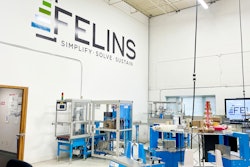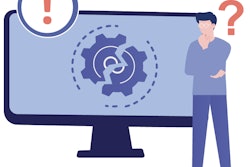“I believe I have a 50/50 shot of closing this piece of equipment.”
“They loved our presentation; I’d give this a 75% chance of closing at this point.”
“My contact is reviewing our quote internally; I’d say we have a 90% chance of closing this one.”
Does this sound familiar? How often do you hear these optimistic statements from your sales team, and then find yourself asking, “Whatever happened to all of the other deals that you forecasted at 90% chance of closure?” Only to hear the typical responses:
“The project was put on hold.”
“My prospect wasn’t able to get the budget.”
“Turns out they were looking at another competitor that offered a better price.”
This scenario is being played out across the globe, in every sales organization—small and large—by salespeople who are feeling the pressure to show pipeline activity. When required to assign a stage and percentage chance of closure to a deal, the critical thinking for most salespeople is biased by wishful optimism and hopeful inference. On one hand, pipeline stage and forecasting are highly influenced by downward pressure from management to show opportunities that have a chance to close during the current quarter. But salespeople are influenced by positive feedback and interest they receive from their main contact.
When asked, most sales leaders will admit it is a numbers game and that the team is closing less than 25% of the deals that are forecasted at 50% or greater. In some cases, the deals are completely falling apart, while in others the close dates keep getting moved and stretched from quarter-to-quarter and year-to-year.
The question is “WHY is our forecasted pipeline so unreliable?” Perhaps it points to a need for:
- Training and playbooks on qualifying and closing.
- Hiring a team of inside hunters to free our outside team up to focus on closing.
- Management involved helping to close late-stage deals.
These are all good tactical approaches that can help drive sales by applying more energy, time, and resource. Unfortunately, these solutions still do not get to the root cause of the forecasting issue.
Misalignment between sales process and pipeline stages
Regardless of the type of sales training and process a company has adopted, they all have several core components the sales team needs to follow:
- Take the time to uncover the business drivers (pain, issues, concerns, and vision).
- Gain full clarity and access to all the stakeholders.
- Clarify the budget allocation, “real” timeline, and formal approval process.
- Address and remediate roadblocks such as competition, budget constraints, and other priorities.
Whether it is based-on experiential wisdom passed down informally through sales management or formalized sales training, the components listed above make up the foundation of all solid sales processes and playbooks.
Still, there are more questions, like: “With all the time, energy, and money we have invested in sales process and CRM, why is it not translating into accurate and reliable pipeline forecasting?”
To answer this, look no further than the company pipeline stages. Most companies are diligently training their salespeople to ask questions and get information from prospects, yet the pipeline stages are based on the answers and information the salespeople provide to prospects.
We teach our people to maintain control of the sales process and most of all not to rush into providing demos and quotes, yet we have them staging their pipeline and percentage chance of closure based on the initial call, solution presentation, proposal, negotiation, and contract pending.
When companies implement stages that mirror the ones above, they are following the conventional thinking that milestones and chances of closure will improve based on information and material delivered.
Getting into alignment
To improve the accuracy of our team’s pipeline forecasting and the effectiveness of our sales management approach, we need to align our pipeline stages with our sales process rather than with our prospect’s evaluation process. This does not mean that salespeople should refuse to do demos, send samples, provide initial quotes and presentations at earlier stages in the relationship cycle where it is appropriate with a prospect. It means that these activities do not translate into increased chances of closure or progression through the sales funnel or pipeline stages.
Stages based on opportunity qualification
To help clarify process and pipeline alignment, I have provided below some sample milestones we use at Venator Sales Group.
- Initial call scheduled.
- Explored and uncovered issues, concerns, and vision.
- Our contact is willing to review stakeholders, competitive landscape, and decision process.
- Access to and/or confirmed budget and initiative approval from the final decision maker(s).
- Validation of budget process, timeline and next steps, and a verbal commit to move forward.
- Reviewed final proposal with prospect and remediated all roadblocks.
- Signature date locked-down, and follow-up call scheduled and accepted.
The above example is based on actual qualification stages meant to align with a sales training program and a formalized sales process. Depending on statistical data, as well as size of deal and whether the prospect is a new or existing client, relevant percentages can be applied.
Benefits of staging based on sales process, include:
- Ability to apply a validation approach by adding fields that are required to be checked off, picked, and completed at each stage in the company CRM.
- Ability to scale sales management team by training sales operations to perform pipeline reviews based on KPIs versus experiential wisdom.
Besides the obvious, which is a more accurate weighted average pipeline, the above list represents just a few of the added benefits of this realignment approach.
Jay Spielvogel is CEO of Venator Sales Group, a sales consulting and training firm specializing in boosting packaging and processing OEM sales performance. Contact him at [email protected].























